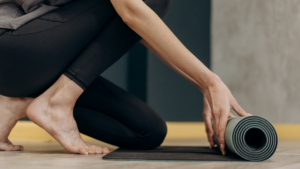Unleash the Power of Cardiovascular Exercise with These Two Forms of Fitness
It’s a timeless debate: swimming or running? Both activities have long been embraced as excellent forms of cardiovascular exercise, but which one reigns supreme? In this in-depth exploration, we dive into the benefits of swimming and the power of running, uncovering the secrets behind their calorie-burning potential. Get ready to make an informed decision about the workout that aligns best with your fitness goals.
Swimming vs. Running: A Battle of the Calorie Burn
When it comes to torching calories, both swimming and running deliver impressive results. Your choice ultimately depends on various factors, including your body weight and the intensity of the exercise.
The Power of Interval Training: Breaking Down Fat
Are you looking to shed excess fat? Both swimming and running can be equally effective when it comes to burning those stubborn calories. Physical therapists emphasizes the importance of interval training in maximizing fat burn. By incorporating short bursts of vigorous exercise followed by low-intensity recovery periods, you can boost your calorie-burning potential significantly.
To achieve remarkable results, experts suggests engaging in high-intensity interval training (HIIT) with both swimming and running. “The total calories you burn are based on the intensity of the exercise, which is linked directly to your heart rate,” experts explains. Incorporating sprints into your routine can elevate your heart rate and lead to optimal calorie and fat burn.
Swimming: Embrace the Gentle Power
If joint health and overall safety are your priorities, swimming emerges as a clear winner. This invigorating activity offers numerous advantages that make it a go-to choice for individuals seeking a low-impact, full-body workout:
Easier on the joints:
Swimming reduces stress on your joints, making it the perfect choice if you have conditions like osteoarthritis or rheumatoid arthritis. A 2016 study even found that swimming as an exercise intervention can reduce stiffness and joint pain.
Safe for injury recovery:
Recovering from an injury, particularly lower-body injuries, becomes more manageable with swimming. The buoyancy of water provides support to your muscles and joints, minimizing impact and allowing for harder workouts.
Versatile calorie-burning options:
Swimming offers a multitude of calorie-burning techniques. From alternating strokes to adding resistance through aqua belts or wrist and ankle weights, you can personalize your pool routine to achieve optimal results.
Engages the whole body:
Engaging in swimming requires the use of multiple muscle groups, providing a full-body workout. Unlike running, swimming activates muscles in your back, chest, arms, and shoulders, ensuring a comprehensive training session.
Running: Onward to a Calorie-Torching Adventure
For those seeking a high-impact, calorie-burning workout, running takes center stage. Strap on your running shoes and embrace the following advantages:
High-calorie burn:
Running is an exceptional choice when it comes to burning calories. By increasing your pace, you can escalate your calorie burn significantly. Incorporating walking or jogging intervals creates a fat-busting workout that leaves you feeling accomplished.
Weight-bearing exercise:
Running contributes to increased bone density, making it ideal for individuals focused on improving their bone health. Unlike swimming, which doesn’t offer the same weight-bearing benefits, running helps combat bone loss.
Accessibility and simplicity:
Running requires minimal equipment, making it accessible to anyone with a good pair of shoes and access to outdoor spaces or a treadmill. Enjoy the freedom of hitting the open road or discovering local tail running spots.
Soak up vitamin D:
Exposing yourself to the sun during outdoor runs provides a valuable dose of vitamin D. Just remember to apply sunscreen and avoid the peak hours of sunlight to protect your skin.
Finding Your Perfect Fit: Swim or Run?
The decision between swimming and running ultimately boils down to your personal preferences, health conditions, and lifestyle. To help you navigate this choice, consider the following questions:
- Do you have joint pain? If you experience arthritis or joint pain, swimming may be a gentler exercise choice that alleviates stress on your joints.
- Do you want to strengthen your upper body? If toning and strengthening your upper body is a priority, swimming presents a better option with its all-encompassing workout.
- Do you prioritize bone health? Running, with its weight-bearing nature, proves beneficial for improving bone density.
- Do you have access to a pool? If access to a pool is limited, running emerges as a versatile exercise that you can partake in almost anywhere, ensuring a consistent fitness practice.
- Do you have a lower body or shoulder injury? Depending on the type of injury you have, swimming or running may alleviate or exacerbate the issue.
Consult with your healthcare provider to choose the right exercise route.
No matter your choice, keep in mind that cardiovascular exercise is key to maintaining overall physical and mental well-being. For a more well-rounded fitness routine, consider incorporating both swimming and running into your workouts. Cross-training can add variety and reduce the risk of injury.
Before commencing any new exercise regimen, especially if you’re new to fitness or have pre-existing health conditions or injuries, consult with your doctor to ensure a safe and effective fitness journey.
Also Read: Quick Stress-Reducing Techniques for a Harmonious Life






